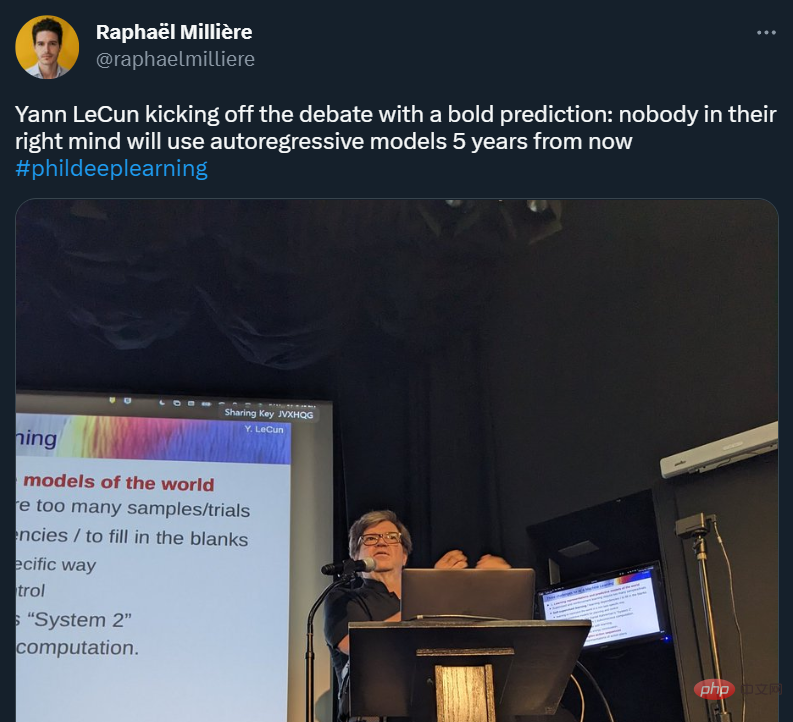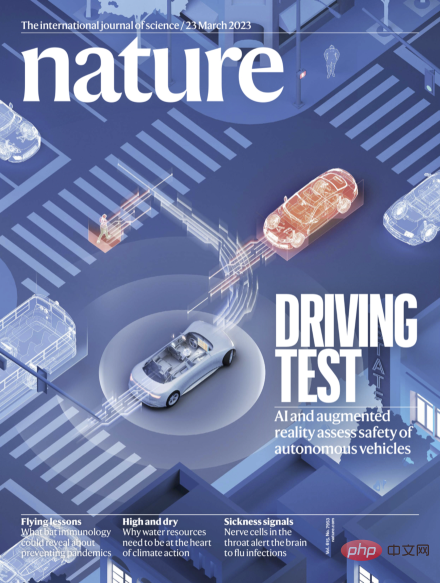 Technology peripherals
Technology peripherals AI
AI Dead spider reincarnated into a robotic arm: the long-awaited miniature pneumatic gripper is here
Dead spider reincarnated into a robotic arm: the long-awaited miniature pneumatic gripper is hereNature has brought a lot of inspiration to robot research and development, and bionic robots emerge in endlessly. But have you ever seen a robot that uses real animal bodies as components?
As shown below, a dead spider is being used as a mechanical gripper to pick up objects heavier than itself:

This is a study from Rice University in the United States. The paper was published in Advanced Science:

Paper address: https://onlinelibrary.wiley.com/doi/full/10.1002/advs.202201174
We know that spiders’ load-bearing capacity is very Powerful, they can carry objects larger than their own weight. But it is extremely difficult for people to create a robot with similar functions. The Rice study takes direct advantage of the spiders themselves.
Living spiders control their limbs by adjusting blood pressure. Higher pressure will cause the limbs to stretch. When the blood pressure in the body decreases, the limbs will expand due to the lack of blood pressure to balance the strength of the flexor muscles. Curl, curl up.
Researchers believe that this principle can be used to drive the limbs of a dead spider. They inserted an injection needle into the spider's body and injected some air into it. All the spider's legs would expand and straighten, thereby controlling the limbs of the dead spider to expand and contract:

Let’s see what this “spider gripper” can do, grab another spider:

manipulationcircuitboard:

In this work, the researchers used the complete bodies of inanimate creatures (dead spiders, wolf spiders) as living things drive (Figure 1), which the researchers say is the first step towards the field of necrobotics research. The study's strategy differs from biomimetic approaches, in which researchers look to the spider's physical form for design ideas that are then implemented in complex engineered systems. This research also differs from biohybrid systems in that it does not require living or active biological materials as a base and therefore does not require elaborate maintenance.
The research uses spider carcasses to create a pneumatically driven gripper that is fully functional in a simple assembly step, circumventing the tedious steps of making fluid-driven devices.
For example, PneuNet grippers typically require 3D printed molds, multiple different components that need to be cast and assembled, and elastomers that take hours or days to cure, which is cumbersome. The pneumatic gripper realized in this study using spider corpses can lift objects 1.3 times its own weight, generate a peak clamping force of 0.35 mN, and can withstand about 700 actuation cycles.

The researchers' process for making a spider gripper is roughly as follows: insert a needle into the anterior body area of the spider corpse, and use glue to fix the needle to the spider's body. body to form a seal (Fig. 1b). From inserting the needle to setting the glue to create a fully operable gripper, it's done in about ten minutes.
The spider extends each leg by actively contracting muscles in the front body to increase its internal hydraulic pressure. In the case of the spider gripper, an external pneumatic pressure source replaces the inherent regulation in the spider, actuating the limbs as the pressure within the spider increases above atmospheric pressure (Fig. 1c). Pressurization and depressurization, respectively, cause all of the spider's legs to open and close simultaneously, effectively acting as grippers.
The following figure shows the force and displacement representation of the spider's gripper:

Faye Yap, one of the authors of the paper, said that the inspiration for this research came from observations in life: "One day when we were moving things in the laboratory, we noticed that there was something on the edge of the corridor. We are curious about why spiders curl up after death."

# #Faye Yap
They searched the encyclopedia and found the answer: spiders do not have antagonistic muscle pairs (like human biceps and triceps), they Only flexor muscles allow their legs to bend and extend outward via hydraulic pressure. After they die, they lose the ability to actively pressurize their bodies, so they curl up.
Yap and other research members thought this was interesting, so they tried to find a way to exploit this mechanism.
It’s worth noting that smaller spiders may be able to withstand the load better than larger spiders. For example, a small 10 mg jumping spider can exert a grip force exceeding 200% of its body weight, while a giant 200 g spider may have a grip strength of only 10% of its body weight.
However, the spiders were not unharmed during the study. "There are currently no clear guidelines for ethical sourcing and humane euthanasia of spiders," the researchers said. The tarantula carcasses used in the study were euthanized by keeping them at freezing temperatures (approximately -4°C) for 5-7 days. of.
The above is the detailed content of Dead spider reincarnated into a robotic arm: the long-awaited miniature pneumatic gripper is here. For more information, please follow other related articles on the PHP Chinese website!
 ai合并图层的快捷键是什么Jan 07, 2021 am 10:59 AM
ai合并图层的快捷键是什么Jan 07, 2021 am 10:59 AMai合并图层的快捷键是“Ctrl+Shift+E”,它的作用是把目前所有处在显示状态的图层合并,在隐藏状态的图层则不作变动。也可以选中要合并的图层,在菜单栏中依次点击“窗口”-“路径查找器”,点击“合并”按钮。
 ai橡皮擦擦不掉东西怎么办Jan 13, 2021 am 10:23 AM
ai橡皮擦擦不掉东西怎么办Jan 13, 2021 am 10:23 AMai橡皮擦擦不掉东西是因为AI是矢量图软件,用橡皮擦不能擦位图的,其解决办法就是用蒙板工具以及钢笔勾好路径再建立蒙板即可实现擦掉东西。
 谷歌超强AI超算碾压英伟达A100!TPU v4性能提升10倍,细节首次公开Apr 07, 2023 pm 02:54 PM
谷歌超强AI超算碾压英伟达A100!TPU v4性能提升10倍,细节首次公开Apr 07, 2023 pm 02:54 PM虽然谷歌早在2020年,就在自家的数据中心上部署了当时最强的AI芯片——TPU v4。但直到今年的4月4日,谷歌才首次公布了这台AI超算的技术细节。论文地址:https://arxiv.org/abs/2304.01433相比于TPU v3,TPU v4的性能要高出2.1倍,而在整合4096个芯片之后,超算的性能更是提升了10倍。另外,谷歌还声称,自家芯片要比英伟达A100更快、更节能。与A100对打,速度快1.7倍论文中,谷歌表示,对于规模相当的系统,TPU v4可以提供比英伟达A100强1.
 ai可以转成psd格式吗Feb 22, 2023 pm 05:56 PM
ai可以转成psd格式吗Feb 22, 2023 pm 05:56 PMai可以转成psd格式。转换方法:1、打开Adobe Illustrator软件,依次点击顶部菜单栏的“文件”-“打开”,选择所需的ai文件;2、点击右侧功能面板中的“图层”,点击三杠图标,在弹出的选项中选择“释放到图层(顺序)”;3、依次点击顶部菜单栏的“文件”-“导出”-“导出为”;4、在弹出的“导出”对话框中,将“保存类型”设置为“PSD格式”,点击“导出”即可;
 ai顶部属性栏不见了怎么办Feb 22, 2023 pm 05:27 PM
ai顶部属性栏不见了怎么办Feb 22, 2023 pm 05:27 PMai顶部属性栏不见了的解决办法:1、开启Ai新建画布,进入绘图页面;2、在Ai顶部菜单栏中点击“窗口”;3、在系统弹出的窗口菜单页面中点击“控制”,然后开启“控制”窗口即可显示出属性栏。
 GPT-4的研究路径没有前途?Yann LeCun给自回归判了死刑Apr 04, 2023 am 11:55 AM
GPT-4的研究路径没有前途?Yann LeCun给自回归判了死刑Apr 04, 2023 am 11:55 AMYann LeCun 这个观点的确有些大胆。 「从现在起 5 年内,没有哪个头脑正常的人会使用自回归模型。」最近,图灵奖得主 Yann LeCun 给一场辩论做了个特别的开场。而他口中的自回归,正是当前爆红的 GPT 家族模型所依赖的学习范式。当然,被 Yann LeCun 指出问题的不只是自回归模型。在他看来,当前整个的机器学习领域都面临巨大挑战。这场辩论的主题为「Do large language models need sensory grounding for meaning and u
 强化学习再登Nature封面,自动驾驶安全验证新范式大幅减少测试里程Mar 31, 2023 pm 10:38 PM
强化学习再登Nature封面,自动驾驶安全验证新范式大幅减少测试里程Mar 31, 2023 pm 10:38 PM引入密集强化学习,用 AI 验证 AI。 自动驾驶汽车 (AV) 技术的快速发展,使得我们正处于交通革命的风口浪尖,其规模是自一个世纪前汽车问世以来从未见过的。自动驾驶技术具有显着提高交通安全性、机动性和可持续性的潜力,因此引起了工业界、政府机构、专业组织和学术机构的共同关注。过去 20 年里,自动驾驶汽车的发展取得了长足的进步,尤其是随着深度学习的出现更是如此。到 2015 年,开始有公司宣布他们将在 2020 之前量产 AV。不过到目前为止,并且没有 level 4 级别的 AV 可以在市场
 ai移动不了东西了怎么办Mar 07, 2023 am 10:03 AM
ai移动不了东西了怎么办Mar 07, 2023 am 10:03 AMai移动不了东西的解决办法:1、打开ai软件,打开空白文档;2、选择矩形工具,在文档中绘制矩形;3、点击选择工具,移动文档中的矩形;4、点击图层按钮,弹出图层面板对话框,解锁图层;5、点击选择工具,移动矩形即可。


Hot AI Tools

Undresser.AI Undress
AI-powered app for creating realistic nude photos

AI Clothes Remover
Online AI tool for removing clothes from photos.

Undress AI Tool
Undress images for free

Clothoff.io
AI clothes remover

AI Hentai Generator
Generate AI Hentai for free.

Hot Article

Hot Tools

SublimeText3 English version
Recommended: Win version, supports code prompts!

mPDF
mPDF is a PHP library that can generate PDF files from UTF-8 encoded HTML. The original author, Ian Back, wrote mPDF to output PDF files "on the fly" from his website and handle different languages. It is slower than original scripts like HTML2FPDF and produces larger files when using Unicode fonts, but supports CSS styles etc. and has a lot of enhancements. Supports almost all languages, including RTL (Arabic and Hebrew) and CJK (Chinese, Japanese and Korean). Supports nested block-level elements (such as P, DIV),

Zend Studio 13.0.1
Powerful PHP integrated development environment

Atom editor mac version download
The most popular open source editor

MinGW - Minimalist GNU for Windows
This project is in the process of being migrated to osdn.net/projects/mingw, you can continue to follow us there. MinGW: A native Windows port of the GNU Compiler Collection (GCC), freely distributable import libraries and header files for building native Windows applications; includes extensions to the MSVC runtime to support C99 functionality. All MinGW software can run on 64-bit Windows platforms.





